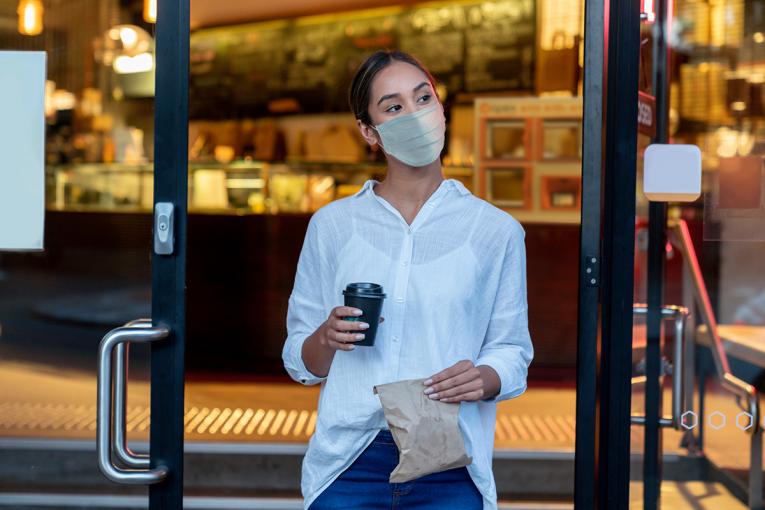Food lockers aren’t new to the quick-serve arena, but like drive thrus and curbside delivery, they’ve become an essential part of operations for many restaurants during the COVID-19 pandemic. Today, these automated machines are expected not only to do their primary job—keep food secure and expedite the order handoff process—but to provide valuable order data insights while doing it.
Apex’s self-serve pickup systems can integrate seamlessly with an operator’s existing tech stack to provide a holistic view of the takeout order process. Using proprietary cloud software, these sturdy lockers push orders through the point-of-sale system, to the kitchen display system, and then send push notifications to the consumer when their order is ready. Operators are alerted when orders are picked up, giving them insights into metrics, such as dwell time, or how long an order sits in the locker.
“This provides valuable data about the orders picked up through native and third-party apps and gives operators more control and understanding about what’s happening in this segment of the customer base,” says Mike Rizzo, Chief Growth Officer at Apex Order Pickup Solutions.
In recent years, the quick-serve industry has invested in technology that enhances the guest experience and allows operators to be more efficient and cost effective. For example, operators have become incredibly efficient at capturing metrics in the drive thru, such as the time it takes to place orders, how to move more people through, and which practices improve order accuracy—but there is still a limited understanding of the consumers that use this service. The growing segment of quick-serve customers using native and third party apps to receive their food, however, is a gold mine of consumer data that can be instantly tapped via Apex food locker solutions.
“I view the locker solution as a hub that captures data across all off-premise orders and provides operators with actionable metrics on order prep time, dwell time, which is the time from order completion to pick up, as well as order accuracy level,” says Rizzo.
Food lockers enhance the guest experience by emphasizing security, communication, and convenience. Using tools such as geofencing, operators can time the preparation process so that orders are made as close to arrival time as possible. This way, the customer receives the freshest possible food and the best possible takeout experience. Communicating that orders have been received, are in progress, and are ready to pick up is a perfect example of how food lockers can benefit a brand long term.
“Having an interface that can leverage native and third-party apps to communicate and develop a relationship with consumers is an extremely powerful marketing tool,” Rizzo says. “While our lockers have many unique features to enhance the consumer experience and the flow of operations—it is the ability of our cloud software to become part of the operator’s technology stack that makes this automated solution so powerful.”
In addition to delivering actionable consumer insights, food lockers allow operators to automate order fulfillment in favor of more added value functions. During the COVID-19 pandemic, many operators introduced curbside delivery not because they wanted to, but because they had to stay competitive. The locker solution is a perfect way to execute curbside without assigning labor to that effort. Given the current labor shortage that is impacting the restaurant industry, the Apex locker solution is well positioned to assist operators in managing these workforce challenges.
“It can be difficult to flex labor to curbside, in addition to being a safety concern,” Rizzo says. “The locker solution allows operators to reduce or redeploy labor to hospitality and guest service.”
Minimizing contact and social distancing between guests and employees is an operational aspect that is not going away—at least not entirely—anytime soon. Apex’s integrated software can be a source of valuable data insights that not only provide a deeper understanding of operations but make the customer journey more enjoyable.
“When operators can tie in data about the order pickup process, it opens up more customer and operational insights, increases efficiency, and ultimately, protects the customer experience,” Rizzo says.
To learn more about how food lockers can integrate with your existing tech stack, visit Apex Order Pickup Solutions.
By Davina van Buren














